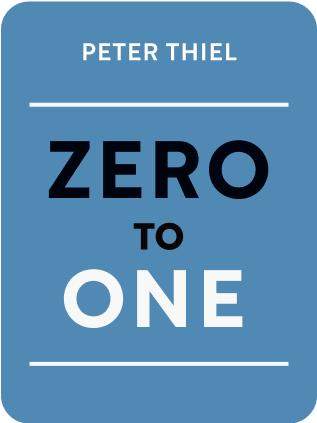

This article is an excerpt from the Shortform summary of "Zero To One" by Peter Thiel. Shortform has the world's best summaries of books you should be reading.
Like this article? Sign up for a free trial here .
What are long-term profits, and why do they matter? How do you earn long-term profits?
While short-term profits are exciting, long-term profits are the way to go. You can create long-term profits by building plans for the future into your startup strategy.
Building for the Future: Long-Term Profits
A monopoly by definition has avoided competition, but to be a great business, there’s more: it must last into the future. This can help you earn long-term profits.
To understand how this works, compare the New York Times Company with Twitter. Each employs thousands of people and delivers news to millions. However, in 2013, Twitter was valued at $24 billion, which was 12 times the Times’ market capitalization. Yet the Times earned $133 million in 2012, while Twitter lost money. How could the money-losing Twitter be worth more than the money-gaining Times? (Shortform note: market capitalization is the total value of a company’s shares of stock.)
The reason for the dramatic difference in value is cash flow—the hallmark of a great business is its ability to generate future cash flow. Investors expected Twitter to generate monopoly profits for the next 10 years, while investors believed the New York Times lacked that ability.
A business’s current value is the sum of the profits it will earn throughout its lifetime. Low-growth businesses are those like newspapers that aren’t expected to grow dramatically in the future—most of their value is near-term. They might retain their value and keep current cash flows for a few years, but competition will erode it in the future. A successful restaurant might be profitable today, but cash flows will dwindle in a few years as new restaurants open.
The pattern is the opposite for tech companies—they often lose money initially and require time to build value. Most of a tech startup’s value will be a decade or more in coming. This doesn’t help you build long-term profits.
For example, by March 2001, PayPal hadn’t made a profit, but revenues were growing 100% year over year. Thiel calculated that 75% of the company’s current value would come from profits generated in 2011 and thereafter. However, he underestimated. At the time of this book’s publication in 2014, it appeared most of the company’s value would come from 2020 and beyond.
The Allure of Short-Term Profits
To be valuable, a company has to both grow and persevere. However, many entrepreneurs overemphasize short-term growth because it’s easier to measure than long-term potential. Focusing on short-term metrics, such as user statistics and revenue targets, can keep you from noticing issues affecting future viability.
For example, initial rapid growth at Zynga and Groupon distracted managers and investors from long-term challenges. While Zynga did well with the game Farmville at first, the company lacked the ability to produce a consistent stream of entertainment content. Groupon’s online deal website also grew initially as local businesses tried the product, but the company struggled to convert them into repeat customers.
In addition to short-term growth, entrepreneurs must build the business to ensure it will last for a decade or more.
Success Comes From Planning
In order to secure long-term profits, you need to think of planning. Businesspeople debate whether success comes from luck or design. Some popular writers and leaders emphasize luck and downplay the importance of design or planning in contributing to success. This makes many people think planning—trying to shape the future—is pointless.
For instance, author Malcolm Gladwell writes in Outliers that success results from “lucky breaks and arbitrary advantages.” Warren Buffett notes that he was lucky to be born with certain qualities. Jeff Bezos and Bill Gates both claim luck played a role in their success.
It’s possible luck could play a role in an individual success, but luck isn’t sufficient to explain how the same person—for instance, Elon Musk, Jack Dorsey, Steve Jobs—could achieve a series of extraordinary, multibillion-dollar successes.
When Dorsey, the founder of Twitter and Square, tweeted in 2013 that “Success is never an accident,” most of the responses were dismissive, citing white male privilege over intelligent planning as the biggest factor in success. However, while connections, wealth, and experience—and luck—can be factors, in recent years, we’ve tended to ignore or overlook the importance of planning.
In the past, people thought differently. From the Renaissance and the Enlightenment into the 20th century, people believed you made your own luck by working hard. Ralph Waldo Emmerson wrote, “Shallow men believe in luck, believe in circumstances … strong men believe in cause and effect.”
Today, whether you think of the future as determined by chance or design affects how you act in the present and whether you ultimately succeed.
Ways of Thinking about the Future
You can think of the future as either: 1) definable and definite or 2) a hazy uncertainty. Your belief about the future determines what you do in the present. If you think of the future as definable and definite, you try to understand it and work to shape it. If you think of it as indefinable and random, you can’t intelligently predict or plan for it.
The prevailing belief today is that the future is unknowable or indefinite. Many dysfunctional attitudes and behaviors stem from this belief. One of the most dysfunctional and limiting is our focus on process rather than substance. Instead of having goals for the future and plans to reach them, most people follow a prescribed process of assembling options. As early as middle school, kids start collecting “extracurricular activities.” In high school, students compete to excel in everything. By the time they reach college, students have assembled a wildly diverse resume to prepare for a seemingly unknowable future; they’re ready for everything and nothing.
By contrast, a student who sees the future as definable focuses on specifics rather than on everything in general. She determines her one more important thing and then devotes time and effort to doing it. Rather than working to be well-rounded and indistinguishable from anyone else, she works to be great at something, in essence, to be a monopoly of one.
Unfortunately, because society has rejected belief in a definable or definite future, no one gets into a top university by being great at one thing, unless it’s a sport.
Our expectations of the future (whether we think it will be better or worse) and our resulting attitude (optimism/hope or pessimism/fear) define our outlook on life. When you combine these possibilities, there are four different outlooks:
| Pessimistic | Optimistic | |
| Definite | 1. Definite Pessimism | 3. Definite Optimism |
| Indefinite | 2. Indefinite Pessimism | 4. Indefinite Optimism |
Long-term profits are important for your business. You can work on long-term profits in your business and starting your launch.

———End of Preview———
Like what you just read? Read the rest of the world's best summary of Peter Thiel's "Zero To One" at Shortform .
Here's what you'll find in our full Zero To One summary :
- Why some companies genuinely move the world forward when most don't
- How to build a company that becomes a monopoly (and why monopolies aren't bad)
- Silicon Valley secrets to selling products and building rockstar teams






